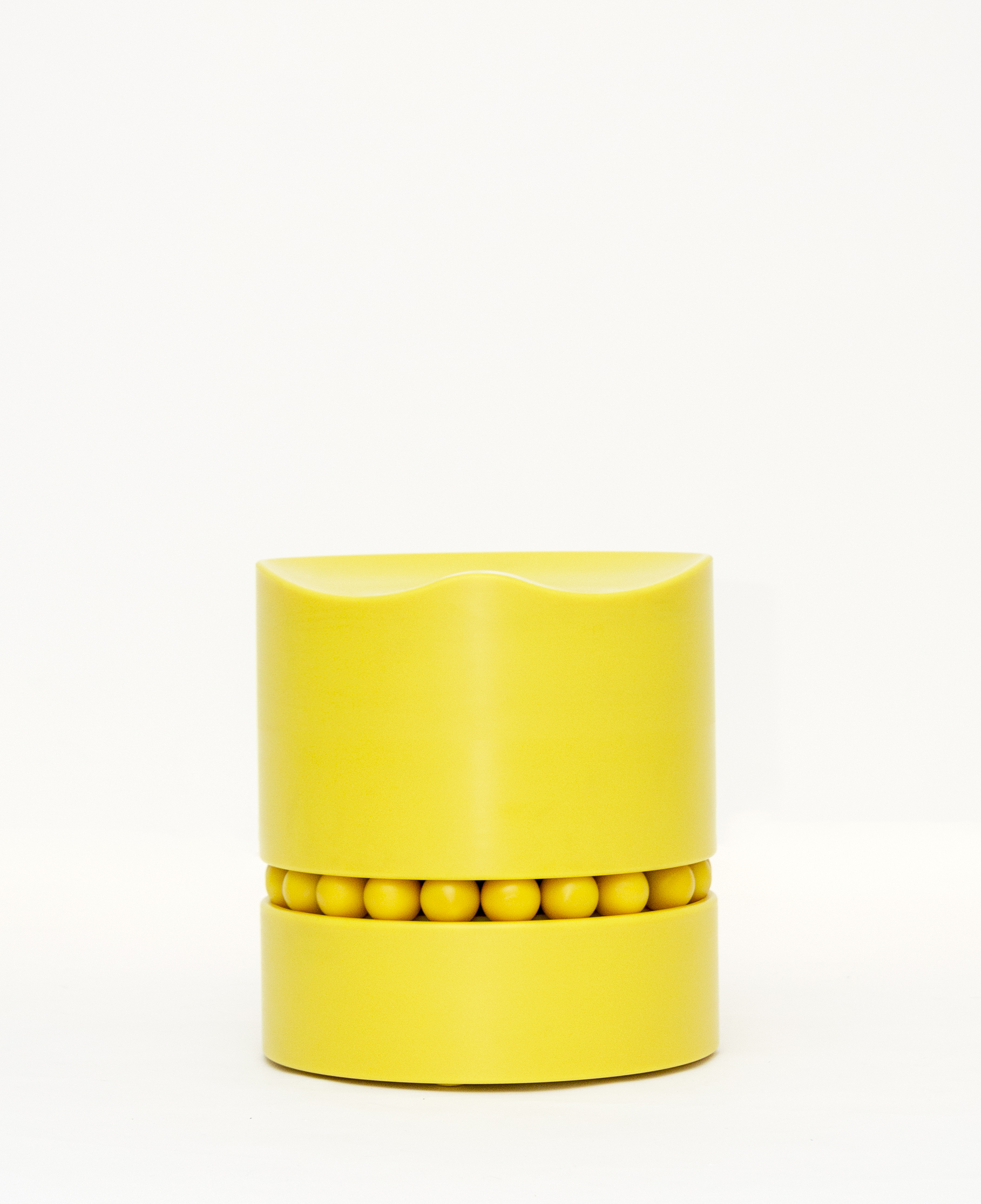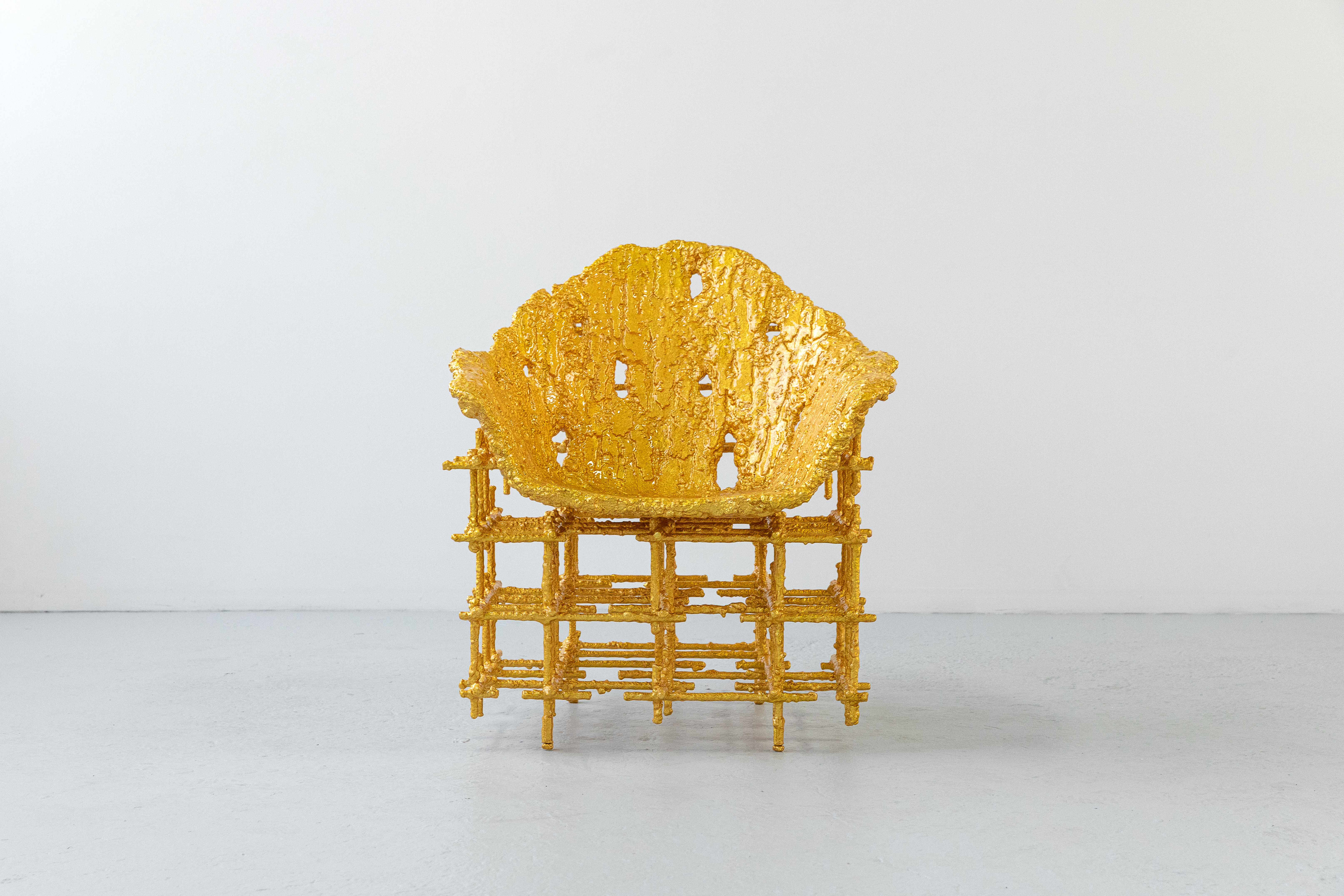Here Comes the Sun
“How wonderful yellow is! It stands for the sun.” Vincent Van Gogh said that, you won’t be surprised to learn; and absent one of his radiant works on the wall, the objects here will do just fine. (We could all use a little lift, nowadays.) Philippe Malouin’s stool is not only bright yellow, but also — thanks to a ring of ball bearings — allows its user to spin as if on a miniature merry-go-round. The design was initially developed for the exhibition Freeplay at the Museum of Contemporary Art Santa Barbara, curated by Alexandra Cunningham Cameron. It is made from a self-lubricating nylon, so no additional hardware is required.
Jaime Hayon’s Niko Niko Side Table coincidentally resembles Malouin’s design, in its color, scale, and even its row of circles — one of the delights of DNA is finding these happenstance similarities — but what’s more important is the shared spirit, which is entirely affirming.
Despite its golden palette, Chris Schanck’s chair is a somewhat different case. It is an example of the Detroit designer’s Alufoil technique, in which impromptu armatures and various found components are visually unified through the addition of resin and metallic foil. In this case, the shell of some castoff modernist chair is set, throne-like, atop a lattice. Like other objects Schanck has made in this way, the chair has a rough-and-tumble, streetwise aesthetic that its shining skin does not entirely overcome. Van Gogh experienced shattering sadness and struggle over the course of his short life, making the beauty that he found through his painting all the more moving. Something of that dynamic is present in Schanck’s work, too. Its glories are hard-won, making it feel particularly relevant in the tough year of 2020. The sun can seem brightest when it’s spotted through the storm.
DNA is a collaborative essay project, intertwining three gallery programs into a single, generative presentation.





